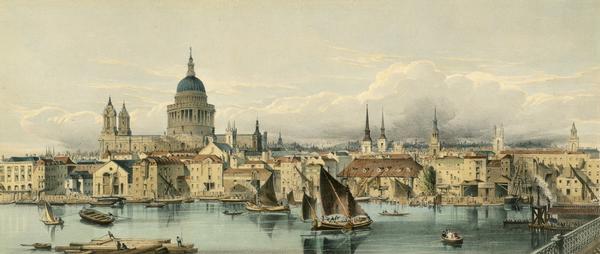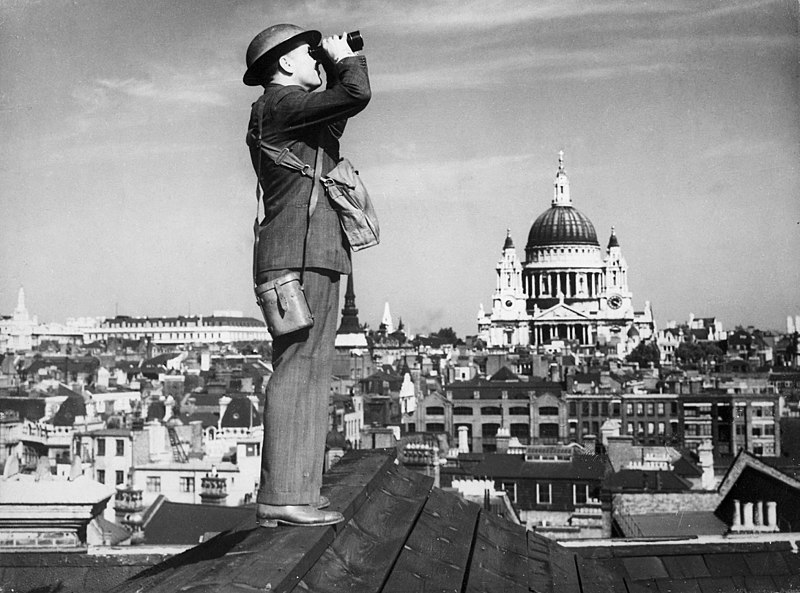
During the Battle of Britain, the German Luftwaffe launches a heavy nighttime air raid on London. The dome of St. Paul's Cathedral was pierced by a Nazi bomb, leaving the high altar in ruin. It was one of the few occasions that the 17th-century cathedral suffered significant damage during Germany's nearly ceaseless bombing raids on London in the fall of 1940.

According to tradition, a Roman temple to the goddess Diana once stood on Ludgate Hill at the site of St. Paul's Cathedral. In 604 A.D., King Aethelberht I dedicated the first Christian cathedral there to St. Paul. That cathedral burned, and its replacement was destroyed by Vikings in 962. A third cathedral was destroyed by fire in 1087 and was replaced by a grand Norman structure that was completed in the 13th century. In the 16th century, the fourth cathedral fell into disrepair and was damaged by fire, and further harm was done during the English civil wars of the 17th century. In the 1660s, the English architect Sir Christopher Wren was enlisted to repair the cathedral, but the Great Fire of London intervened, destroying Old St. Paul's Cathedral in 1666.


In the aftermath of the fire, Wren designed a new St. Paul's Cathedral, with dozens of smaller new churches ranged around it like satellites. The cathedral was Wren's masterpiece, featuring a baroque design and a prominent, stately dome. Wren himself set down the foundation block in 1675 and in 1710 put the final stone in place. When the architect died in 1723, he was buried with great ceremony in St. Paul's. An inscription near his tomb reads, Lector, si monumentum requiris, circumspice--Latin for "Reader, if you seek a monument, look about you." Many other notable British citizens later joined him in St. Paul's crypts, including the military heroes Lord Nelson and the Duke of Wellington.


St. Paul's Cathedral became an inspiration to the British people during World War II. In the Battle of Britain, the Luftwaffe attempted to bomb Britain into submission by pounding London and other major cities, but St. Paul's miraculously escaped major bomb damage, even as historic buildings nearby were reduced to rubble. Images of St. Paul's framed by smoke and fire became a symbol of Britain's indomitable spirit. Civilian defense brigades, including the St. Paul's Fire Watch, protected the structure from fire, and at one point an unexploded bomb was removed at great risk from the roof of the cathedral. Despite the damage caused on the night of October 9, 1940, the cathedral survived the Blitz largely intact. In 1944, St. Paul's bells rang out to celebrate the liberation of Paris, and in 1945 services marking the end of the war in Europe were attended by 35,000 people.
BOMB DAMAGE TO ST. PAUL'S
taken from: http://www.history.com/this-day-in-history/st-pauls-cathedral-bombed [08.10.2012]



No comments:
Post a Comment